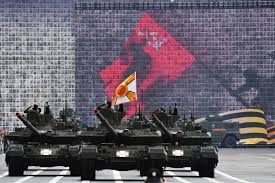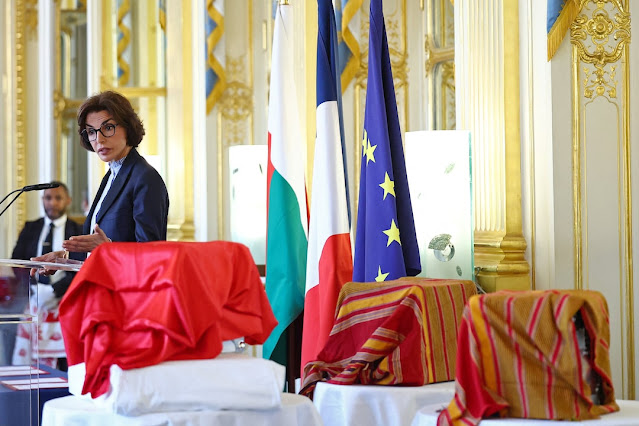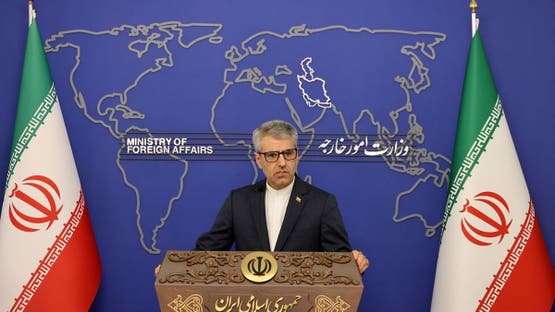Beijing, China – On Tuesday, August 26, 2025, China solemnly commemorated the 80th anniversary of its victory in the War of Resistance Against Japanese Aggression and the global fight against fascism with a high-profile military symposium held in Beijing. The event, attended by senior military and government officials, underscored China’s unwavering commitment to national security, military modernization, and global peace. Vice Chairman of the Central Military Commission (CMC), Zhang Youxia, delivered a keynote address, emphasizing the inseparable link between national security and military strength while reaffirming the Communist Party of China’s (CPC) absolute leadership over the armed forces. The symposium also served as a platform to highlight China’s vision for a “shared future for humanity” and its role as a stabilizing force in the post-World War II international order.
The commemoration comes at a time when China is navigating complex global challenges, including geopolitical tensions, technological competition, and the need to maintain stability in a rapidly changing world. Zhang’s remarks reflected a dual focus on strengthening national defense through innovation and governance while advocating for international cooperation to preserve global peace. The event not only honored the sacrifices of those who fought in the war but also set the stage for China’s strategic priorities in the decades ahead, reinforcing its position as a global power with a modernized military capable of addressing both domestic and international challenges.
Historical Context: The War of Resistance Against Japanese Aggression
The War of Resistance Against Japanese Aggression (1931–1945), also known as the Second Sino-Japanese War, was a pivotal chapter in China’s history and a critical component of the global fight against fascism during World War II. The war began with Japan’s invasion of Manchuria in 1931 and escalated into a full-scale conflict in 1937, marked by brutal campaigns that resulted in millions of Chinese casualties, both military and civilian. The conflict, which merged with the broader Second World War, saw Chinese forces, led by both the CPC and the Nationalist government, engage in a protracted struggle against Japanese aggression.
The war ended on September 2, 1945, with Japan’s surrender following the atomic bombings of Hiroshima and Nagasaki and the Soviet Union’s entry into the Pacific theater. China’s victory was a testament to the resilience and sacrifices of its people, who endured immense hardship to secure their nation’s sovereignty. The 80th anniversary commemoration serves as a reminder of the war’s profound impact on China’s national consciousness and its determination to prevent such aggression in the future.
The military symposium in Beijing was a fitting tribute to this historic milestone, bringing together military leaders, historians, and policymakers to reflect on the war’s legacy and its relevance to contemporary challenges. The event was held under the theme of honoring the past while building a secure and prosperous future, aligning with China’s broader narrative of national rejuvenation.
Zhang Youxia’s Address: Military Strength as the Backbone of National Security
Vice Chairman Zhang Youxia, one of China’s top military leaders, delivered a powerful address that underscored the centrality of military strength to national security. “National security is inseparable from military strength,” Zhang declared, emphasizing that a strong and modernized military is essential to safeguarding China’s sovereignty, territorial integrity, and development interests. His remarks come amid growing regional tensions, particularly in the South China Sea, Taiwan Strait, and along China’s borders, as well as increasing competition with major powers like the United States.
Zhang reaffirmed the CPC’s “absolute leadership” over the People’s Liberation Army (PLA), a principle that has guided China’s military strategy since the founding of the People’s Republic in 1949. The CPC’s control ensures that the PLA remains aligned with national priorities, including economic development, technological innovation, and global diplomacy. Zhang stressed that loyalty to the Party is non-negotiable, describing it as the “soul” of the military and a guarantee of its effectiveness.
The Vice Chairman outlined a multi-pronged approach to military modernization, focusing on combat readiness, innovation, and governance. He called for accelerated reforms to enhance the PLA’s capabilities, including the integration of advanced technologies such as artificial intelligence, cyber warfare, and space-based systems. “Strengthening national defense through technological advancement and improved governance is central to China’s long-term security,” Zhang said, highlighting the need to stay ahead in the global technological race.
Zhang’s emphasis on innovation reflects China’s broader ambition to become a global leader in science and technology. The PLA has made significant strides in recent years, with investments in hypersonic missiles, stealth aircraft, and unmanned systems. These advancements are part of China’s goal to transform the PLA into a “world-class” military by 2049, the centennial of the People’s Republic. The symposium provided a platform to showcase these efforts, with displays of cutting-edge military equipment and discussions on the role of technology in modern warfare.
Preserving the Post-World War II Order
A key theme of Zhang’s address was China’s commitment to preserving the post-World War II international order, which he described as a cornerstone of global stability. The order, established through institutions like the United Nations and agreements such as the Bretton Woods system, has shaped international relations for eight decades. However, Zhang noted that this order is under strain due to rising protectionism, unilateralism, and geopolitical rivalries.
“China remains committed to being a stabilizing force in global peace,” Zhang said, urging greater efforts to promote cooperation under the vision of a “shared future for humanity.” This concept, championed by President Xi Jinping, envisions a world where nations work together to address common challenges such as climate change, poverty, and security threats. Zhang’s remarks align with China’s broader foreign policy, which emphasizes multilateralism, mutual respect, and non-interference in the affairs of other nations.
The Vice Chairman called for strengthened international cooperation to counter threats to global stability, including terrorism, cybercrime, and regional conflicts. He highlighted China’s contributions to UN peacekeeping missions, its role in international arms control agreements, and its efforts to promote dialogue in conflict zones. By positioning China as a defender of the post-World War II order, Zhang sought to contrast China’s approach with what Beijing perceives as the destabilizing actions of some Western powers.
China’s Role in Global Peace and Security
China’s commitment to global peace is rooted in its historical experience of resisting foreign aggression and its aspiration to play a leading role in international affairs. The War of Resistance Against Japanese Aggression was a formative event that shaped China’s national identity and its determination to avoid subjugation. Zhang’s address drew on this history to underscore China’s resolve to prevent conflicts that threaten its sovereignty or the stability of the international system.
At the same time, Zhang emphasized that China’s pursuit of peace does not come at the expense of its defense capabilities. “Even as we promote global peace, we must accelerate our defense and military development,” he said. This dual approach reflects China’s strategic calculus: a strong military is essential to deterring aggression and protecting national interests, while diplomatic engagement ensures a stable environment for economic growth and development.
China’s contributions to global security include its participation in UN peacekeeping operations, with over 50,000 Chinese personnel deployed since the 1990s. The country has also played a key role in mediating conflicts, such as the Iran-Saudi Arabia reconciliation in 2023, and has advocated for arms control and non-proliferation. These efforts have bolstered China’s image as a responsible global power, even as it faces criticism from some quarters for its assertive actions in the South China Sea and its military buildup.
Military Modernization: A Strategic Imperative
The symposium provided a platform to highlight China’s ongoing military modernization, a priority under President Xi Jinping’s leadership. Since the 2015 military reforms, the PLA has undergone significant restructuring to enhance its efficiency, joint operations capabilities, and technological edge. These reforms have included the establishment of new theater commands, the creation of a Strategic Support Force for cyber and space operations, and investments in advanced weaponry.
Zhang emphasized that combat readiness is at the heart of these reforms. The PLA has intensified training exercises, including joint drills with other nations, to prepare for a range of scenarios, from territorial defense to counterterrorism. The integration of advanced technologies, such as artificial intelligence and quantum computing, is transforming the PLA’s capabilities, enabling it to operate in complex, multi-domain environments.
Innovation is another key pillar of China’s military strategy. The country has invested heavily in research and development, with a focus on emerging technologies that could provide a strategic advantage. For example, China’s development of hypersonic missiles and stealth aircraft has drawn global attention, signaling its intent to compete with leading military powers like the United States and Russia. Zhang underscored the importance of self-reliance in defense technology, noting that China must reduce its dependence on foreign suppliers to ensure its security.
Improved governance is also critical to China’s military modernization. Zhang called for stronger oversight mechanisms to ensure discipline, transparency, and accountability within the PLA. The CPC has made anti-corruption a priority, with high-profile campaigns targeting senior military officials in recent years. These efforts aim to strengthen public trust in the military and ensure that resources are used effectively to advance national defense goals.
The Legacy of the War of Resistance
The 80th anniversary commemoration was an opportunity to honor the sacrifices of those who fought in the War of Resistance Against Japanese Aggression. The war, which claimed an estimated 14 million Chinese lives and displaced tens of millions, was a defining moment in the country’s history. It united disparate factions, including the CPC and the Nationalist Kuomintang, in a common struggle against a foreign invader, laying the groundwork for China’s eventual victory and the establishment of the People’s Republic.
The symposium featured tributes to key figures of the war, including military leaders, resistance fighters, and civilians who supported the effort. Historical exhibits and presentations highlighted the resilience of the Chinese people, who endured years of hardship to secure their nation’s freedom. The event also served as a reminder of the importance of national unity in the face of external threats, a theme that resonates in China’s contemporary security discourse.
Zhang paid tribute to the war’s veterans, many of whom are now in their 90s or older, and called for continued efforts to preserve their stories for future generations. “The sacrifices of our heroes must never be forgotten,” he said, urging young Chinese to draw inspiration from their courage and determination. Educational initiatives, such as museum exhibits and school curricula, are being expanded to ensure that the war’s legacy remains a vital part of China’s national identity.
Global Implications of China’s Military Strategy
China’s military modernization and its commitment to global peace have significant implications for the international community. As the world’s second-largest economy and a rising military power, China’s actions are closely watched by both allies and adversaries. The symposium’s emphasis on technological advancement and combat readiness signals China’s intent to project power beyond its borders, particularly in the Indo-Pacific region, where tensions over Taiwan, the South China Sea, and maritime boundaries persist.
The United States, in particular, views China’s military buildup with concern, citing its potential to alter the regional balance of power. The U.S. has responded by strengthening alliances, such as the Quad (comprising the U.S., Japan, India, and Australia), and increasing its military presence in the Indo-Pacific. China, in turn, has accused the U.S. of pursuing a containment strategy, leading to heightened tensions in areas like technology and trade.
At the same time, China’s advocacy for a “shared future for humanity” aligns with its efforts to build partnerships with developing nations, particularly in Africa, Latin America, and Asia. The Belt and Road Initiative (BRI), launched in 2013, has facilitated infrastructure development and economic cooperation with dozens of countries, reinforcing China’s role as a global leader. The symposium’s call for international cooperation reflects this broader strategy, positioning China as a champion of multilateralism and a counterweight to Western dominance.
Challenges and Opportunities
China’s military modernization and its global ambitions are not without challenges. Domestically, the country faces economic pressures, including a slowing growth rate, an aging population, and the need to balance defense spending with social priorities like healthcare and education. The PLA’s rapid expansion has also raised questions about resource allocation and the sustainability of its modernization drive.
Internationally, China must navigate a complex geopolitical landscape marked by competing interests and alliances. Its assertive actions in the South China Sea, including the construction of artificial islands and military outposts, have drawn criticism from neighboring countries and Western powers. Similarly, its stance on Taiwan, which Beijing considers a part of its territory, remains a flashpoint with the potential to escalate into conflict.
Despite these challenges, China’s strategic position offers significant opportunities. Its technological advancements, growing economic influence, and diplomatic outreach provide a foundation for expanding its global role. The symposium’s focus on innovation and governance suggests that China is well aware of the need to balance military strength with responsible leadership.
Reactions and Public Sentiment
The symposium was widely covered by Chinese state media, which portrayed it as a powerful affirmation of China’s strength and unity. Editorials in outlets like the People’s Daily and Xinhua praised Zhang’s address, emphasizing the importance of a strong military in safeguarding national interests. The event was also seen as a moment of national pride, with social media posts highlighting the sacrifices of the War of Resistance and the PLA’s modern achievements.
Internationally, reactions were mixed. Some analysts viewed the symposium as a signal of China’s growing confidence and its intent to assert itself as a global power. Others expressed concern about the implications of its military buildup, particularly in the context of regional tensions. Western media outlets noted the emphasis on the CPC’s leadership, interpreting it as a reaffirmation of China’s centralized political system.
Looking Forward
As China marks the 80th anniversary of its victory in the War of Resistance Against Japanese Aggression, the symposium in Beijing serves as both a tribute to the past and a blueprint for the future. Vice Chairman Zhang Youxia’s address underscored the centrality of military strength to national security, while also highlighting China’s commitment to global peace and cooperation. The event reaffirmed the CPC’s leadership over the PLA, the importance of technological innovation, and the need to preserve the post-World War II order.
Looking ahead, China faces the challenge of balancing its military ambitions with its diplomatic goals. The PLA’s modernization will continue to shape global perceptions of China’s rise, while its advocacy for a “shared future for humanity” offers a vision for international cooperation. By honoring the sacrifices of its past heroes and investing in a modern, capable military, China is positioning itself as a leader in a rapidly evolving world.






